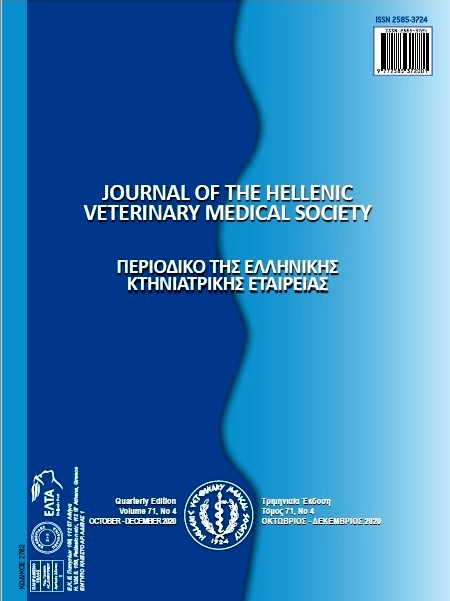Class1-3 integrons and antimicrobial resistance profile in Salmonella spp. isolated from broiler chicken in Western Iran
Abstract
Salmonella spp. are major etiologies of food-borne infections that are disseminated primarily through poultry to human. Nowadays, the high rate of antimicrobial resistance and the emergence of multi-drug resistant (MDR) strains, worse the threat imposed to the public health. Integrons are attributed as important contributors to MDR isolates. The present research aimed to identify the frequency of integrons 1-3 and the antimicrobial resistance patterns in Salmonella spp. isolated from broiler chicken in Western Iran. A total of 500 fecal samples were screened for Salmonella phenotypically. The isolates were confirmed genotypically and the frequency of integrons 1-3 was evaluated molecularly among the isolates. Besides, the antimicrobial resistance of the isolates was determined through the agar disk diffusion method. In general, 67 (13.4%) isolates of Salmonella spp. were recovered phenotypically, all of which were confirmed molecularly. The incidence of class 1, 2, and 3 integrons was 40.29% (27 isolates), 28.35% (19 isolates), and 11.94% (eight isolates), respectively. Coexistence of integrons was also detected in 26.86% of the isolates including class 1+2 (13 isolates, 40.62%), class 1+3 (2 isolates, 6.25%), and class 1+2+3 (3 isolates, 9.37%). No statistical association was detected between the frequencies of Salmonella spp. or Salmonella-bearing integron isolates with age, season, and location. The most frequent antimicrobial resistance was exhibited to ampicillin, nalidixic acid, trimethoprim-sulphamethoxazole, and tetracycline; while ciprofloxacin, gentamicin, and ceftazidime were the most effective drugs. 35.82% of the isolates were MDR, all of which harbored at least one class of integrons. Statistical assessment represented an association between the prevalence of integrons and tetracycline, chloramphenicol, streptomycin, and ceftazidime resistance rates. An alarming rate of integrons and MDR frequency among poultry-originated Salmonella spp. in the studied region demands the constant stewardship and prudent prescription and use of antibiotics to prevent human infections and preserve the effectiveness of those antibiotics in treating human salmonellosis.
Article Details
- Zitationsvorschlag
-
NEMATI, F., & AHMADI, E. (2021). Class1-3 integrons and antimicrobial resistance profile in Salmonella spp. isolated from broiler chicken in Western Iran. Journal of the Hellenic Veterinary Medical Society, 71(4), 2471–2482. https://doi.org/10.12681/jhvms.25922
- Ausgabe
- Bd. 71 Nr. 4 (2020)
- Rubrik
- Research Articles

Dieses Werk steht unter der Lizenz Creative Commons Namensnennung - Nicht-kommerziell 4.0 International.
Authors who publish with this journal agree to the following terms:
· Authors retain copyright and grant the journal right of first publication with the work simultaneously licensed under a Creative Commons Attribution Non-Commercial License that allows others to share the work with an acknowledgement of the work's authorship and initial publication in this journal.
· Authors are able to enter into separate, additional contractual arrangements for the non-exclusive distribution of the journal's published version of the work (e.g. post it to an institutional repository or publish it in a book), with an acknowledgement of its initial publication in this journal.
· Authors are permitted and encouraged to post their work online (preferably in institutional repositories or on their website) prior to and during the submission process, as it can lead to productive exchanges, as well as earlier and greater citation of published work.



